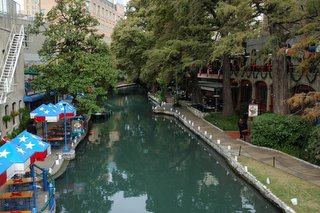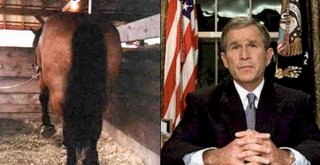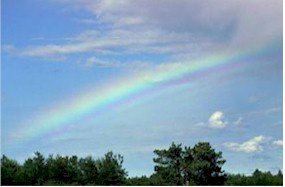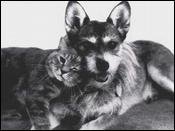http://www.uwp.edu/departments/university.relations/annualreport/03annualreport/value.pdfThe second show was a memorial retrospective of the work of Steve Vasy, a
retired tool and die maker who attended UW-Parkside for 22 years and was
made an honorary member of the Art Department faculty. The show included
his work, plus work done about Vasy by a host of alumni and faculty members.Vasy found elements everywhere for his artBY
SHERRI L. JACKSON, Nov. 21, 2001
RACINE -- Your trash and junk could very well have landed in Stephen Vasy's house.
He combed the streets in search of stone, wood and metal that he could use to make sculptures. "He picked up anything he thought he could make something out of," said Marjorie Vasy, Stephen's wife of 55 years.Stephen, 83, died Monday at his home that is filled with the art he's created since 1980.
Vasy, a sculptor and printmaker, had been creating art since retiring from tool-and-die making in 1980. The first art class he took was sculpture. It was sort of like tool making, where you shape the material.
"He retired and wanted to do something. He had never done art before. He tried until he found something he could do," Marjorie Vasy said.
Besides Vasy's love of art, he was a longtime member of the YMCA and an art student at the University of Wisconsin-Parkside from 1979 to 2001.
In May 1998, he was made an honorary professor in the university's art department, which has established a scholarship in his name.
A memorial service will be held at 4 p.m. Saturday at Draeger-Langendorf Funeral Home, 1910 Taylor Ave. Relatives and friends are invited to meet with the family from 2 p.m. until the time of the services.
In lieu of flowers, memorials may be made to Parkside's art department for the Vasy scholarship.
UW-Parkside hosts renown print showBY JEFF WILFORD, January 27, 2000Compared to the art museums and universities of New York, Los Angeles and Chicago, the University of Wisconsin-Parkside appears outclassed. That is, unless, your art is printmaking. Parkside hosts one of the year's most prestigious print exhibitions, this weekend, attracting nearly 100 artists to its campus.
What started out as a way to attract national attention to the University of Wisconsin-Parkside has blossomed into a prestigious annual event.
The National Print Show displays artwork by some of the biggest names in American printmaking. It is the only juried print show in Wisconsin and one of only a few in the United States.
"I think that I've found the people throughout the United States, if I tell them I teach at UW-Parkside, they say, 'Oh, I know your print show,'" says Doug DeVinny, an art professor and the person responsible for organizing the exhibit.
The show highlights all types of print media -- lithographs, etchings, screen prints and digital prints to name a few, DeVinny says.
The exhibition started years ago after university administrators solicited ideas for projects that would bring national attention to the school. DeVinny had experience working with prints, so he put together the initial funding and started the show.
That was 14 years ago. The first print show was by invitation. The 13 since then have been juried.
This year's show features 116 works by 99 artists from 47 states. Artists were selected by a judge from a field of about 800 prints by almost 300 artists, DeVinny says.
The works are an eclectic blend of surrealism and realism, of hope and despair, of bright and dark colors. A pageful of fake billion-dollar bills. A print of a man, daughter and dog all wearing gas masks. A graphic depiction of a man and woman contemplating a sexual encounter.
It's entirely possible that some of the biggest names in the print medium have works hanging next to works by college undergraduates, hanging next to works by UW-Parkside faculty, DeVinny says.
Among the artists in the show are five Racine artists:
Margaret Suchland, print-maker.
This is not Suchland's first appearnce in the National Print Show. She has been juried in several times before.
"I've been very fortunate," she says. "But it doesn't matter. Each time is a wonderful feeling."
Maybe a little more wonderful since her print, "Alphabet," won a purchase award this year.
"Alphabet" is a collage. Each letter is represented three times, in different fonts, giving it the appearance of a ransom note assembled from letters cut out of magazines. Suchland designed the letters on computer then printed them on oriental paper.
Suchland also etched the pattern in the background of "Alphabet" and layered it to give the effect of multiple images. The work was inspired by her fascination with the alphabet -- with the different forms, symbolism and personalities of each letter.
"The pattern on the piece that's combined with the alphabet is based on ancient civilization and the symbolism attached to mark-making and the alphabet," she says. "I'm not trying to express anything profound. It's oftentimes an element of design. And a lot of times, it's strictly experimentation ... And I thought it was kind of exciting to take a traditional medium, like etching, and combine it with something digitally."
Alan Goldsmith, assistant art professor, UW-Parkside.
It wasn't until a few weeks before the entry deadline that Goldsmith settled on what print he would make.
Goldsmith, who has a degree in Russian, started by developing a print of the czar of Russia. The print would use tiny double-headed eagles instead of dots to form the image.
Too obscure, he thought. Nobody would get it. He needed something more contemporary, more recognizable.
The result: "Monopoly Money: A Page of Bills."
The work consists of a series of billion dollar bills, front and back. On the front, instead of the face of a president, is the face of Microsoft founder and president Bill Gates. Above him are the words "In Greed We Trust." On the back is a picture of Gates' mansion.
"I guess I always thought of Bill Gates as being more a money man and marketer than an innovator," Goldsmith explains.
He studied a typical dollar for features to incorporate, and researched Microsoft and Gates online. He designed the work on and printed it from his computer.
"Not a Windows machine," Goldsmith points out.
James S. Adams, United States Postal Service letter carrier.
Adams came upon the idea for his print, "Digital Encounter," by accident. It happened while he was scanning some of his art -- usually cast paper and plaster molds -- onto his computer to document them.
"I was just kind of playing around one day, inverting the colors, and I thought 'Wow, look at that," he says. "I like to experiment with color, yes. I would say those were deliberate colors. I wanted something positive."
Thus the surreal scheme of bright colors in "Digital Encounter," which appears as a handprint on a circuit board. Adams took his inspiration for the subject matter from a magazine article he read about surgically attaching mechanical hands to amputees.
To make the print, Adams scanned in images of his hand and a computer board on a computer. He also used images of an old Journal Times printing plate and some of his molds, although those may be difficult to spot.
Making prints on a computer is more flexible than making molds and has a wider variety of outcomes, he says.
"With the other process, it's kind of straight forward , start to finish, and once you get there, you're done," Adams says. "And there's nothing to do except major surgery to change it.
"With the computer, it's completely different ... There are so many possibilities with a computer that you can get lost."
Stephen Vasy, retired tool & dye makerVasy makes his first appearance in the National Print Show, although he has been making prints and sculpting since 1980. That's when he retired and took an art class to fill his time.
Vasy didn't limit himself to just one technique when creating his print, "I Think I Need This."
"It's a little bit of everything," he says. "Some dry point ... also cut-out sections and overlay."
The print depicts a police officer and three other people, including one with a pipe raised over his head. A razor wire fence occupies the bottom corner of the print.
The subject? "I guess violence, more than anything" Vasy says. "Things get out of hand."
The idea for the image came from a magazine or newspaper picture. Vasy can't remember exactly what the photo was or where he saw it. But it left an impression of violence, of one person beating another.
Vasy came up with the colors part by chance, part by design.
"Most of the time, I use red, blue and yellow and white. I use them almost always," he says. "In that particular print, I thinned out the ink with thinner... and that way the inks would flow together, blend."
David Holmes, professor of art, UW-Parkside.
"Rhinoceros" is a three-dimensional linocut sculpted in the shape of, well, a rhinoceros. The print is made of 10 pieces of paper, all tabbed and glued together.
"I don't want to say it's like a paper doll," Holmes says. "But it's like one of those turn-of-the-century paper models where you put tab A into tab B."
Each piece of paper bears a relief print. The work was inspired by 16th century artist and print maker Albrecht Durer, whom Holmes admires.
"Mine is a little bit more funky," Holmes says. "His is certainly much more academic."
He worked on the project for three weeks. The most difficult part was putting the paper together to resemble a rhinoceros.
Holmes came up with the idea because of work he is doing as part of a fellowship for the University of Wisconsin-Milwaukee's Center of 20th Century Studies. The theme of the fellowship is "Representing Animals."
This is the third year that Holmes' work has been accepted into the show.
"It's always a thrill," he says. "I think it's important, no matter how big a cheese you get to be, you exhibit locally."


















































